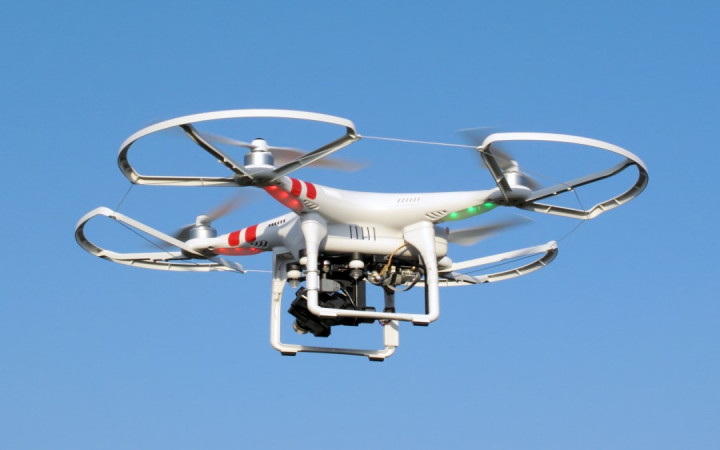As you're playing in the backyard, you suddenly hear a faint buzzing sound. Is it a swarm of bees coming your way? You listen closely and the sound gets louder. It's definitely coming from above you.
You look up and scan the skies above you. Could it be a bird? A superhero? Nope! It's a small helicopter-like device with four propellers, hovering over your backyard. What is it? A drone, of course!
People flying quadcopter drones as a hobby may seem like a new fad, but drones have been around for a long, long time. In fact, drones have been around almost as long as airplanes have been used in warfare.
But what exactly is a drone? In general, any unpiloted aircraft or spacecraft could be considered a drone. Some people use another term for drone: unmanned aerial vehicle or UAV. The absence of a pilot isn't necessarily the only criterion for a drone, though.
Remote-controlled airplanes and helicopters have been around for decades. Most people don't consider these drones, though, because a person is controlling all of their movements. To be considered a true drone, most experts believe a device must be able to perform tasks such as flying, hovering, and navigating without human input. Some level of autonomy is thus necessary to be considered a drone.
Drones were first developed for military purposes. Drones allowed military organizations to gather information and deliver bombs without putting a pilot's life at risk in dangerous war zones. Unlike the small drones hobbyists use today, military drones can be quite large, approaching the size of regular aircraft. Drones are so useful for the military that experts estimate that a third of all aircraft operated by the United States Air Force today are drones.
Modern drones used by hobbyists are lightweight and run on batteries. Unlike military drones, they can only stay airborne for a few minutes before their batteries need to be recharged. Longer flying times would require larger batteries, which would weigh too much for the drone to take to the sky!
More than just a fad, drones are definitely here to stay. In February 2015, the Federal Aviation Administration (FAA) began drafting rules for public use of drones for a variety of purposes. The rules are necessary to ensure the safe use of drones and to prevent accidents or interference with other aircraft.
Will drones affect your life in the future? You never know! At least one major Internet retailer, Amazon.com, wants to use drones to deliver packages to customers. Farmers are investigating ways in which drones can be used to apply pesticides or fertilizer to crops. Meteorologists have also started using drones to help monitor severe weather situations, such as large storms and hurricanes.




